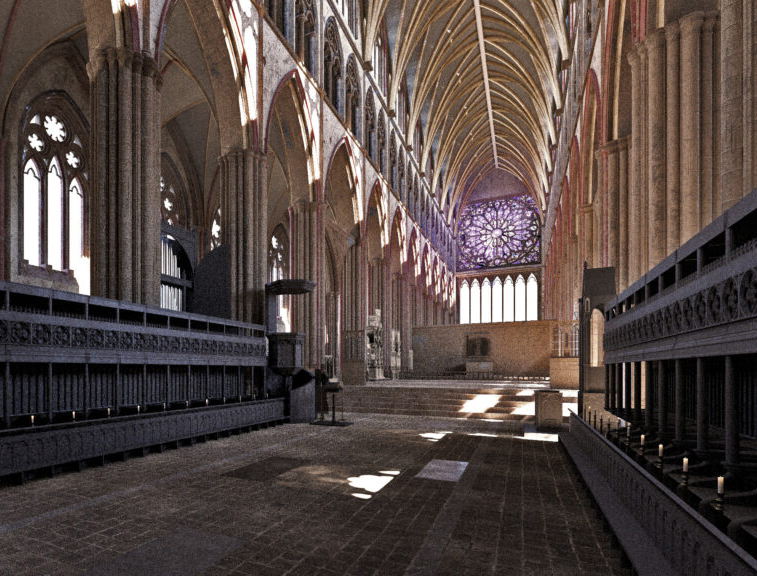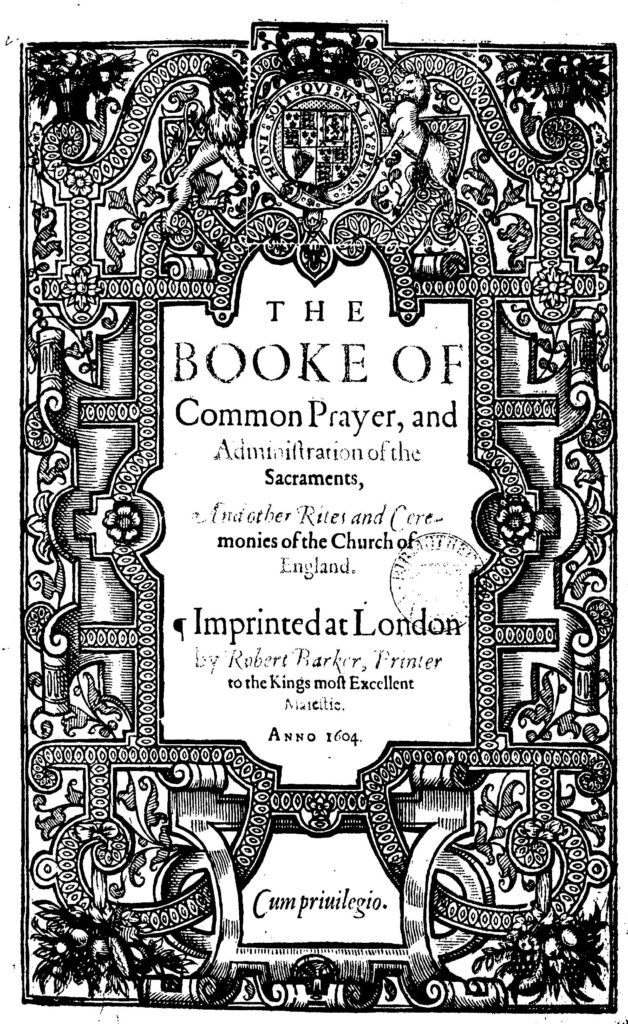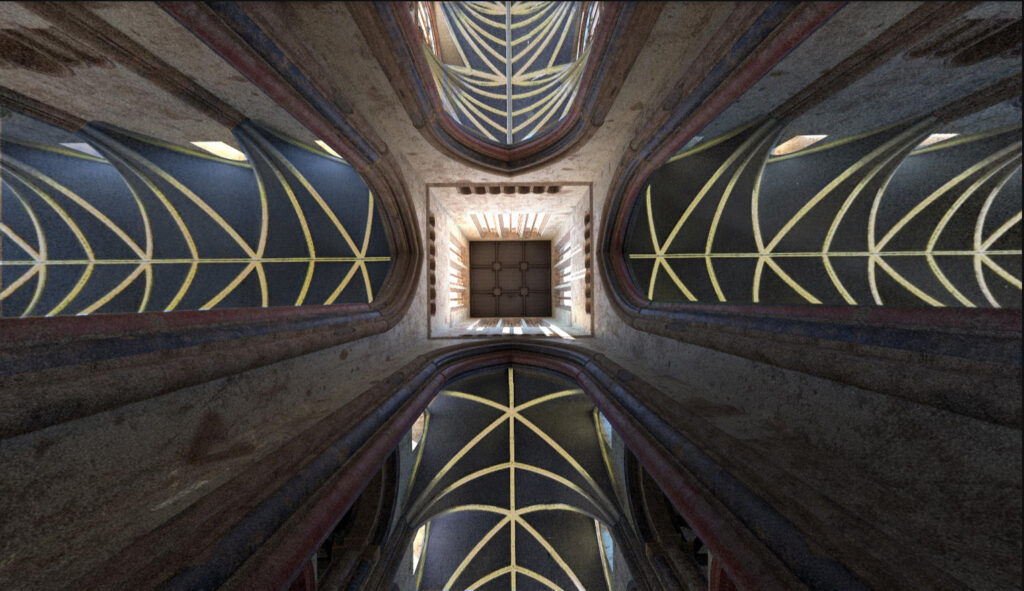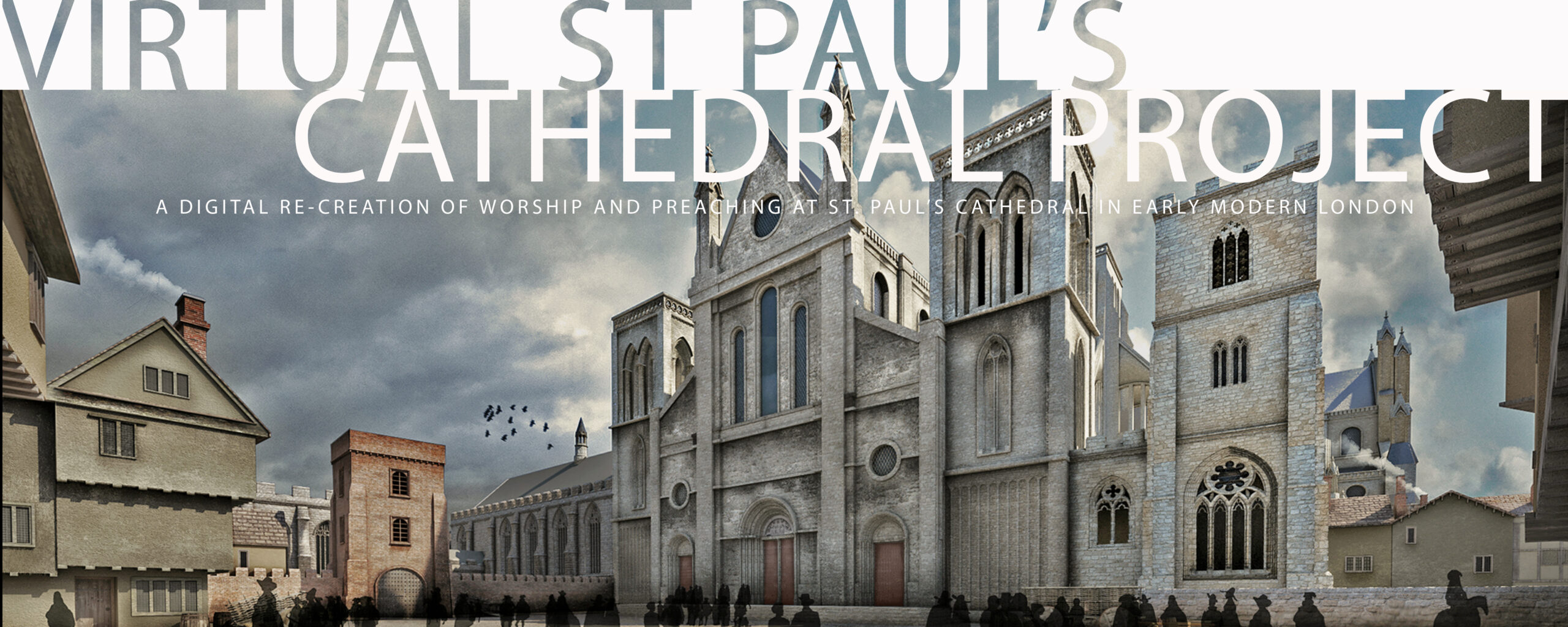
WHERE at the death of oure late Soveraigne lord King Edward the sixt, there remained one uniforme order of common service and prayer, and of the administracion of Sacramentes, Rites, and Ceremonies, in the churche of Englande, whiche was set furth in one booke entituled: The booke of common prayer, and administracion of Sacramentes, and other Rites and ceremonies in the churche of Englande, aucthorised by Act of Parliament . . .
Be it therefore enacted, by the aucthoritie of this present parliament, that the sayde booke, with the ordre of service, and of the administracion of Sacramentes, Rites and Ceremonies, with the alteracion, and addicions, therein added and appoynted by this estatute, shall stande, and be from and after the sayde feaste of the Nativitie of Sainct John Baptist, in full force and effect . . . And further be it enacted by the quenes highnes, with the assent of the lordes and commons, in thys present Parliament assembled, and by aucthoritie of the same, that all and synguler ministers, in any cathedrall, or paryshe church . . . shall . . . be bounden to saye and use the Matins, Evensong, celebracion of the Lordes supper, and administracion of eche of the Sacramentes, and all their Common and open prayer, in suche ordre and fourme, as is mencioned in the sayde booke . . . . .
From An Act for the Vniformitie of Common Prayer, and Service in the Church, and addministration of the Sacraments (The Booke of Common Prayer, 1604)
The Virtual St Paul’s Cathedral Project addresses issues raised by emerging fields of study and practice such as digital archaeology, data visualization, public history, historic acoustic reconstruction, recreation of soundscapes, material culture studies, historical geography, liturgical studies, and material religious studies. These fields seek to recover the experience of past time through integrating data about ephemeral and material events and practices into forms of presentation that enable students of the past to explore the changing past from multiple perspectives and in simultaneous narratives.
The Cathedral Project also addresses ongoing issues in a number of traditional and developing academic disciplines. These include English Reformation history, where revisionist historians’ emphasis on theological debates among Church elites, including the faculties at Oxford and Cambridge, as well as their use of continental sources for defining the Reformed tradition, ignore the content and significance of daily worship in the nations’ cathedrals and collegiate and parish churches. [1]The best account of those theological debates, as well as specifics of continental reformers influence, or lack of influence, on Thomas Cranmer and other architects of the English Reformation is … Continue reading
These fields also include the work of literary scholars who have sought to fit major writers like Donne and Herbert into preconceived understandings of one or another theological or spiritual tradition rather than attend to the formative reception of worship and the reading of biblical texts that structured the daily content of their devotional lives. [2]Christopher Marsh’s study Popular Religion in Sixteenth-Century England (Macmillan, 1998) is especially strong in in his attention to the practices that formed the vast majority of early modern … Continue reading
This website contains resources for understanding worship in English cathedrals and parish churches in the early seventeenth century. Chief among them are auralized recordings of the services appointed for use every day of the year — the Divine Services of Morning Prayer (Matins) and Evening Prayer (Evensong) — as well as services appointed for a narrower range of days — (the Great Litany, appointed for Wednesdays, Fridays, and Sundays and Holy Communion, appointed for Sundays and Holy Days).
These services recreate two full days in St Paul’s Cathedral — an ordinary (or ferial) day (that is, a day that is neither a Wednesday, Friday, or Sunday nor a Holy Day), specifically the Tuesday after the First Sunday in Advent in 1625 and a Festival Day, Easter Sunday in 1624. These services reflect, in the choice of music and in other ways, differences in style of performance reflecting the difference between a festival, or special occasion and an ordinary, everyday occasion.

These services are presented in “suche ordre and fourme, as is mencioned in the sayde booke,” the Book of Common Prayer. The Easter Day services include Morning Prayer, the Great Litany, and Holy Communion, with a sermon at the appointed place in the Book of Common Prayer. The Easter Day services also include Evening Prayer, with a sermon following the Service. In other cathedrals across England, sermons sometimes were presented as stand-alone events, outside of or even in competition with, the services called for by the Book of Common Prayer. But we have found no evidence that this was the practice at St Paul’s, and strong evidence that the organization we model was the one that was followed.
These services are auralized inside an Acoustic Model of the Choir of St Paul’s Cathedral, so that our experience of them will be that of a member of the congregation at these events in 1624 and 1625. Explanations of the acoustic modeling process, descriptions of the various features of the auralizations, and access to the i-Pack Simpa program, an open-source acoustic modeling program, are available under the Acoustic Model tab. Access to the full recordings is to be found under the Worship tab on this website.
All six of the worship services we have recreated for this website can be heard from six different listening positions within the Cathedral’s Choir, the space in which worship services were conducted at St Paul’s. This is where the members of the Cathedral’s Chapter of resident clergy, the Cathedral’s musicians, and the resident staff gathered twice each day to observe the Daily Offices of Morning and Evening Prayer. It is where the full array of Prayer Book services — Morning Prayer, the Great Litany, and Holy Communion — were conducted on Sundays and Holy Days. It is where sermons were preached in the afternoons of Sundays and Holy Days.
As one shifts from one listening position to another the quality of the sound changes to capture differences in the acoustical properties of each of these spaces. We can sample the experience of listening to these differences by playing the video below, which contains both spoken and sung parts of Easter Matins from all six listening positions.
The Acoustic Model is derived from our Visual Model, which seeks to integrate all the information we can find about the appearance, dimensions, and locations of the Cathedral itself and the other buildings inside Paul’s Churchyard. Explanations of the Visual Modeling process, as well as discussions of the various kinds of data we incorporated into the Visual Model are available under the Visual Model tab on this website.
The CATHEDRAL tab on this website provides background information on St Paul’s Cathedral, on the other buildings inside Paul’s Churchyard, and on the people who lived, worked, and worshipped here. There are also discussions of John Donne, Dean of the Cathedral from 1621 until his death in 1631 as well as background information on the post-Reformation Church of England.
The SERVICES tab provides discussions of the scripts for worship, including the options provided by the Book of Common Prayer, with auditory illustrations drawn from the services we have recreated. The Support tab provides information on our ever-patient Advisory Committee, on the large and growing number of people who have been part of the Production Team, on original sources and scholarship we have drawn on to inform and guide our work. Sources of permissions for using material — especially the visual images — are also located here.
The FRAMEWORK tab, which you, gentle reader, are using as you read this, includes this Guide to the organization of the website as well as statements of purpose for the Project, a list of notices, reviews, and other forms of recognition we might receive, and information about joining the conversation about your work by contacting any of our three Principal Investigators.
Another feature of this site is information about opportunities for future research into the Cathedral, into worship in the post-Reformation Church of England, into Donne’s career as priest and Dean of the Cathedral. These sections are scattered throughout the website as appropriate for their subject matter. We have run across, in the course of developing this project, information that either came too late to be incorporated, or took us down lines of inquiry we have not yet had the chance to follow, or point to bodies of knowledge outside the general boundaries of this Project. Feel free to follow any of them and let us know what you turn up.

References
| ↑1 | The best account of those theological debates, as well as specifics of continental reformers influence, or lack of influence, on Thomas Cranmer and other architects of the English Reformation is Peter White’s Predestination, Policy, and Polemic: Conflict and consensus in the English Church from the Reformation to the Civil War (Cambridge, 1992). |
|---|---|
| ↑2 | Christopher Marsh’s study Popular Religion in Sixteenth-Century England (Macmillan, 1998) is especially strong in in his attention to the practices that formed the vast majority of early modern Englishfolk as Christians over the course of their lifetimes. |
